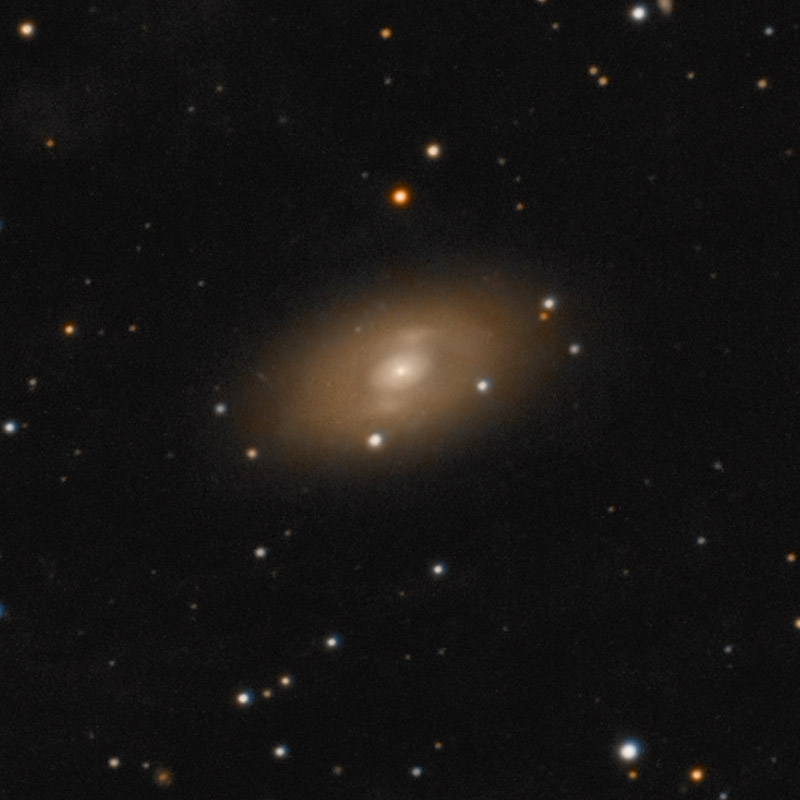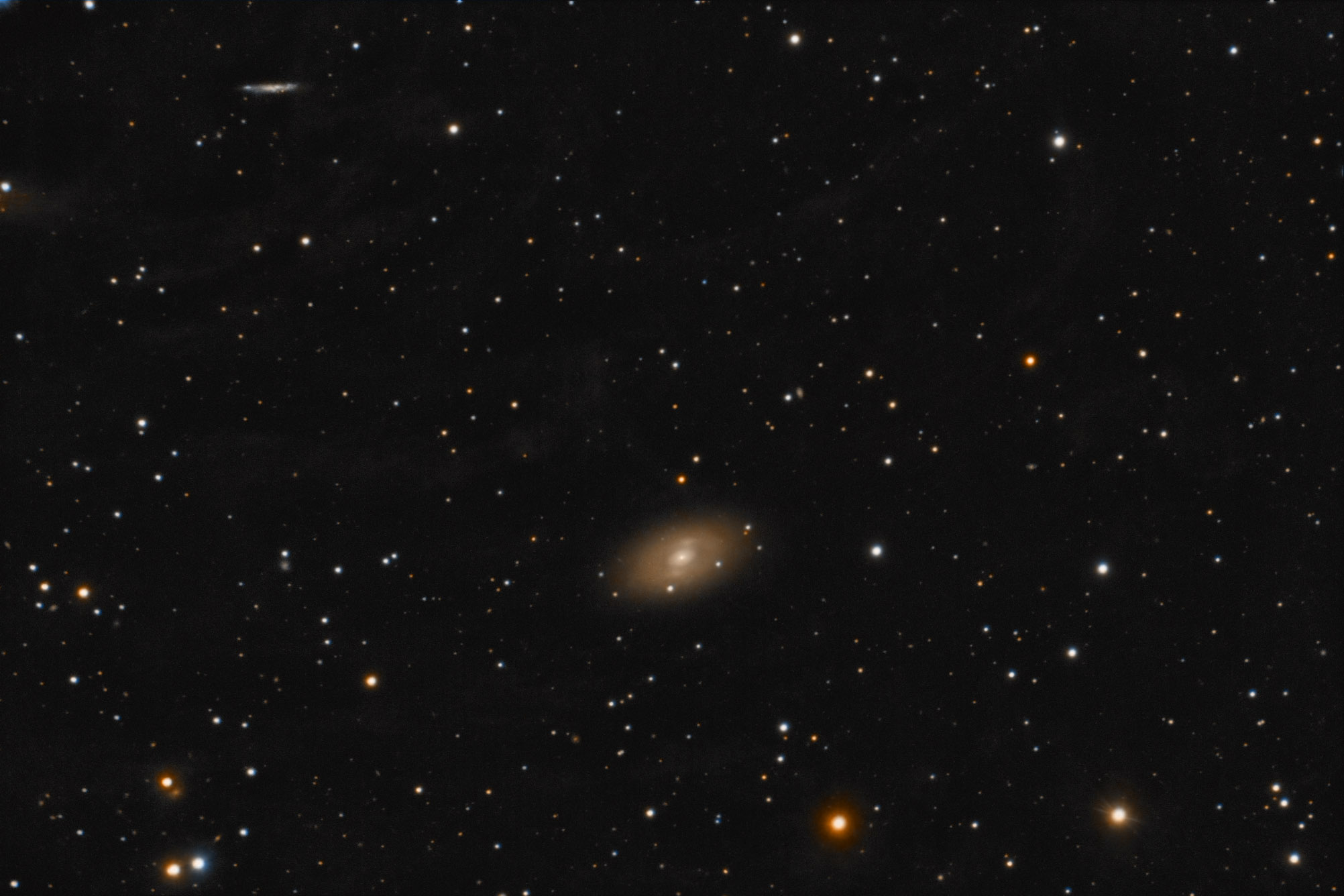Object name: NGC2787 NGC 2787 is a barred spiral in Ursa Major. Redshift puts it about 36 million light-years away though this has a large error bar. NED lists two other distance measurements of 42 million light-years by Tully measurement and 24 million light-years by resolution of Surface Brightness Fluctuations. The HST has taken a great image of the core of this galaxy and uses the 24 million light-year distance. I don't know if this is yet another measurement or they are using the SBF measurement.
The NGC Project classes it as SB(0) while NED says SB(r)0+ LINER. So it has an active core. The HST image shows a lot of fine dust rings around the south side of the core. I didn't resolve the dust rings but do see a hint of their color along the south side of the core. I have no idea if this is due to those bands or just coincidental noise due to my short integration time. The location is correct at least. I see only a hint of the bar other than the bright regions where it joins the ring structure. Its red color indicates star formation has been very low for a very long time so all the blue stars have long since burned out or are hidden behind thick dust.
For more on this one see the HST image and info at http://heritage.stsci.edu/2002/07/index.html . The HST image covers a square of 37 pixels around the core in my image.
NGC 2787 was discovered by William Herschel on December 3, 1788. It is in the original H400 program. My entry from April 27, 1984 with 12.5" f/5 at up to 150x under excellent conditions reads; "Bright starlike nucleus, rapidly dims to a faint glow surrounding it. Appears more circular than Burnham's 2.1'x1.3' dimensions would indicate."
The galaxy to the upper left is UGC 04944. NED has no redshift distance for it so I don't know if it is related to NGC 2787 but rather doubt it is. It is a Scd: spiral seen nearly edge on.
The entire image is bathed in faint galactic cirrus which came as a surprise to me when processing the image. After seeing it on the first night's images I went back the second night to help bring it out. Unfortunately, airglow was much higher so it was not nearly as strong but seeing was better. I combined all 8 frames which helped resolution but hurt the cirrus. I need to retry this on a good night with low airglow. Rarely happens here of late, however.
14" LX200R @ f/10, L=8x10' RGB=2x10', STL-11000XM, Paramount ME Related Designation(s):2MASS J09191859+6912115, 2MASX J09191853+6912122, 2MASXi J0919185+691211, 2XMM J091918.6+691211, 2XMMp J091918.6+691211, CGCG 0914.8+6925, CGCG 332-041, CXO J091918.59+691211.7, CXO J091918.6+691211, GALEXASC J091918.69+691212.1 , IRAS 09148+6924, IRAS F09148+6924, LQAC 139+069 001, MCG +12-09-039, NGC 2787, NGC 2787:[L2011a] X0001, NGC2787, NVSS J091918+691208, PGC 026341, SSTSL2 J091918.51+691211.2, UGC 04914, UZC J091918.5+691211, [GMM2009b] 15, [VCV2001] J091918.9+691212, [VCV2006] J091918.9+691212, | | 
